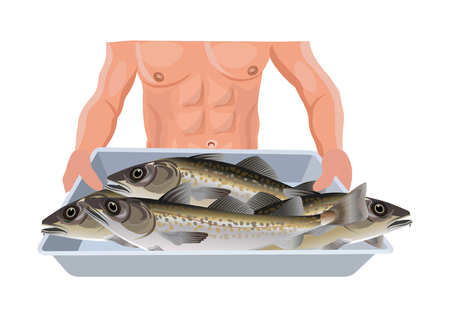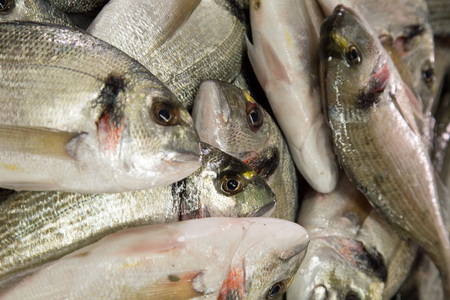Introduction to Fish Nutrition Across Life Stages
Understanding the nutritional needs of fish at different life stages is crucial for ensuring their optimal health, growth, and overall well-being. Just like humans and other animals, fish require specific nutrients depending on their age and stage of development. Young fish, often referred to as fry or juveniles, have unique dietary requirements that support rapid growth, immune system development, and proper organ formation. In contrast, adult fish need a balanced diet that maintains their health, supports reproductive functions, and sustains energy levels for daily activities. Whether you are an aquarist caring for pet fish or a professional managing an aquaculture operation, tailoring feeding strategies to match the life stage of your fish can make a significant difference in their longevity and vitality. By exploring the distinct nutritional needs of young versus adult fish, you can create feeding programs that promote healthy development from hatchling to maturity.
Nutritional Requirements of Young Fish (Fry and Juveniles)
During the earliest life stages, young fish—commonly known as fry and juveniles—have unique nutritional needs that are crucial for proper growth, development, and survival. Because these fish are rapidly growing, their diets must provide essential nutrients in forms that are easily digestible and bioavailable.
Vital Nutrients for Fry and Juvenile Fish
Protein is the most important macronutrient for young fish. High-protein diets support tissue formation, enzyme production, and overall body growth. In addition to protein, young fish also require specific amino acids, lipids for energy and cell membrane development, vitamins such as Vitamin C and E for immune function, and minerals like calcium and phosphorus for skeletal health.
| Nutrient | Purpose | Recommended Level (%) |
|---|---|---|
| Protein | Tissue growth & repair | 40–55% |
| Lipids (Fats) | Energy & cell membranes | 8–12% |
| Carbohydrates | Supplemental energy source | <20% |
| Vitamins (C, E) | Immunity & antioxidant functions | Trace amounts |
| Minerals (Ca, P) | Skeletal development | Trace amounts |
Preferred Feed Types for Fry and Juveniles
The physical form of feed is just as important as its nutritional content. Because fry have very small mouths and underdeveloped digestive systems, they thrive on finely ground feeds such as powdered or micro-pelletized food. For the youngest fry, live foods like infusoria, rotifers, or newly hatched brine shrimp are often preferred because they closely mimic natural diets and are highly digestible. As juveniles grow, transitioning to slightly larger pellets or flakes becomes appropriate.
Common Feed Options by Life Stage:
- Fry (First weeks): Infusoria, rotifers, micro-worms, powdered starter feeds.
- Early Juveniles: Newly hatched brine shrimp, fine granules or micro-pellets.
- Larger Juveniles: Crumbled flakes or small floating/sinking pellets formulated for growth.
Feeding Frequency Recommendations
Young fish require frequent feeding due to their high metabolic rates. Multiple small meals throughout the day ensure steady nutrient intake and minimize waste.
| Life Stage | Feeding Frequency (per day) |
|---|---|
| Fry (0–4 weeks) | 4–6 times daily |
| Juvenile (1–3 months) | 3–4 times daily |
| Larger Juveniles (>3 months) | 2–3 times daily |
The Importance of Growth-Promoting Diets
A well-balanced, protein-rich diet during early development helps young fish achieve their genetic growth potential while supporting immune function. Deficiencies or inappropriate feeding at this stage can result in stunted growth, deformities, or increased susceptibility to disease. By meeting the nutritional needs of fry and juveniles with properly formulated feeds and appropriate feeding strategies, you set the foundation for healthy adult fish in your aquarium or pond.

3. Adult Fish Nutritional Needs
As fish transition from their juvenile stage to adulthood, their nutritional requirements undergo significant changes. Unlike young fish that need high levels of protein and specific nutrients for rapid growth, adult fish require a more balanced diet designed to support overall health, maintain bodily functions, and promote reproductive success. For mature fish, the emphasis shifts toward maintenance energy—the calories needed to fuel daily activities and metabolic processes without contributing to excessive weight gain or fat deposition. Protein levels in adult diets are generally lower than those required by fry or juveniles, but they remain essential for tissue repair and immune system function. Additionally, healthy fats become increasingly important as a source of sustained energy and to ensure optimal absorption of fat-soluble vitamins. Minerals such as calcium and phosphorus continue to play a key role in bone maintenance, while trace elements like iodine and selenium support hormonal balance and reproductive health.
Reproduction is a major consideration for many species of adult fish, especially those kept for breeding purposes. Diets enriched with omega-3 fatty acids, antioxidants (such as vitamin E), and carotenoids can enhance fertility, egg quality, and the health of offspring. Ensuring adults receive enough vitamins—particularly A, C, D, and E—helps boost immunity and supports healthy skin and scales. Overfeeding should be avoided, as excessive calorie intake can lead to obesity-related problems and decreased lifespan. A well-structured feeding strategy tailored to the specific needs of each species will not only sustain adult fish through routine activities but also optimize their overall well-being during this stable phase of life.
4. Choosing the Right Feed for Each Life Stage
Selecting the appropriate feed for fish at different life stages is essential for promoting healthy growth and overall vitality. Both young (larval and juvenile) and adult fish have unique nutritional requirements, which should be addressed by choosing feeds with suitable ingredient quality, nutrient profiles, and particle sizes.
Commercial Feeds: Matching Formulations to Life Stages
Commercial fish feeds are specifically formulated to meet the needs of various developmental stages. For young fish, these feeds focus on higher protein content, easily digestible ingredients, and micro-sized pellets or crumbles that fit their small mouths. Adult fish feeds, on the other hand, balance protein with fats and carbohydrates while offering larger pellet sizes suited to mature fish.
Comparison Table: Commercial Feed Options
| Life Stage | Feed Type | Protein (%) | Fat (%) | Typical Pellet Size |
|---|---|---|---|---|
| Larval/Juvenile | Starter crumble or micro-pellets | 45–55% | 8–12% | <1 mm |
| Adult | Pellets or flakes | 30–40% | 6–10% | 2–5 mm |
Natural Food Options: Supplementing Diets Responsibly
In addition to commercial diets, many aquarists and fish farmers incorporate natural foods to mimic wild feeding behaviors and boost nutrition. Young fish benefit from live foods such as brine shrimp nauplii, daphnia, or microworms—rich sources of protein that stimulate appetite. For adults, options like chopped earthworms, frozen krill, or leafy greens can provide variety and additional micronutrients.
Natural Food Suggestions by Life Stage
| Life Stage | Recommended Natural Foods | Main Nutritional Benefit |
|---|---|---|
| Youth (Fry/Juvenile) | Brine shrimp nauplii, infusoria, microworms | High protein & easy digestion |
| Adult Fish | Earthworms, bloodworms, vegetable matter (spinach, peas) | Diverse nutrients & enrichment |
Considerations for Ingredient Quality and Feed Size
No matter the life stage, always choose high-quality feeds free from excessive fillers or artificial additives. The feed should contain named protein sources (like fish meal or shrimp meal) rather than generic by-products. Equally important is matching pellet size to the mouth size of your fish—too large and it may go uneaten or cause choking; too small and it could be wasted or disintegrate in water.
By carefully selecting commercial feeds and supplementing with appropriate natural foods tailored to each stage of development, you can help ensure your fish thrive from fry to full-grown adults.
5. Best Practices for Feeding Strategies
Ensuring that fish receive optimal nutrition at every life stage starts with smart, practical feeding strategies. Whether you’re caring for a community aquarium or a backyard pond, fine-tuning your approach to timing, portion control, and ongoing monitoring can make a significant difference in your fish’s health and longevity.
Timing: When and How Often to Feed
Young fish, or fry, typically require more frequent feedings—up to three or four times daily—because of their rapid growth and higher metabolic needs. As fish mature, their metabolism slows, so adult fish usually thrive on one to two feedings per day. Stick to a consistent feeding schedule; this helps regulate digestion and reduces stress for your fish.
Portion Control: Avoiding Overfeeding
Overfeeding is one of the most common mistakes in home aquariums and ponds. Only provide what your fish can consume within two to three minutes. Uneaten food quickly decomposes, impacting water quality and potentially leading to health issues like obesity or fin rot. Use species-specific guidelines as a starting point, but always observe your fish’s behavior and adjust portions as needed.
Monitoring Fish Health and Behavior
Regularly monitor your fish after feeding sessions. Healthy fish will be active and show interest in food without displaying signs of bloating or lethargy. In both tanks and ponds, keep an eye out for leftover food, changes in swimming patterns, or any unusual physical symptoms. These observations can alert you early to nutritional imbalances or health concerns.
Adapting Strategies for Mixed-Age Communities
If you have mixed-age groups, consider using feeding rings or separation techniques so young and adult fish each get access to the right type of food. Sinking pellets are ideal for bottom feeders, while floating flakes work well for surface eaters—matching the diet form to feeding habits helps reduce competition and ensures all life stages are properly nourished.
Consistent Cleanliness Supports Nutrition
Always remove uneaten food promptly and maintain regular cleaning routines. Clean water is essential for nutrient absorption and overall vitality across all ages. By combining thoughtful timing, appropriate portions, vigilant monitoring, and a clean environment, you’ll support the unique nutritional needs of both young and adult fish while fostering a thriving aquatic community.
6. Common Feeding Mistakes and How to Avoid Them
Proper nutrition is vital for fish at every life stage, but common feeding mistakes can undermine even the best intentions. Understanding these errors and how to avoid them will help ensure your young and adult fish thrive while maintaining a healthy aquarium environment.
Overfeeding: The Most Widespread Issue
One of the most frequent mistakes among both new and experienced aquarists is overfeeding. Whether with fry or mature fish, excess food quickly leads to poor water quality, obesity, and increased disease risk. Young fish require more frequent but smaller feedings, while adults often need less food than owners assume.
How to Prevent Overfeeding
- Feed only what your fish can consume in 2–3 minutes.
- Remove uneaten food promptly to prevent decay.
- Establish a regular feeding schedule—fry may need 3–4 small feedings daily, while adults generally do well with 1–2 feedings per day.
Malnutrition: Missing Essential Nutrients
Feeding a single type of food or neglecting age-appropriate diets can cause malnutrition. Young fish need high-protein foods to support rapid growth, while adults benefit from a balanced diet with sufficient fiber and vitamins for long-term health.
How to Avoid Malnutrition
- Choose species- and age-specific foods, such as specialized fry powders or pellets for juveniles.
- Rotate between different high-quality commercial foods and supplement with occasional live or frozen options like brine shrimp or bloodworms.
Water Quality Issues Linked to Feeding Habits
Poor feeding practices, especially overfeeding and not removing leftovers, cause ammonia spikes and cloudy water. These conditions stress both young and adult fish, making them more susceptible to illness.
Maintaining Water Quality
- Monitor water parameters regularly using test kits.
- Perform routine partial water changes, especially after heavy feedings or when raising fry.
Avoiding these common mistakes is essential for supporting the nutritional needs of your fish throughout their lives. With mindful feeding habits tailored to each life stage, you’ll foster vibrant, healthy fish and a thriving aquatic environment.
7. Conclusion and Key Takeaways
Supporting the health and vitality of your fish throughout their lives depends on understanding and meeting their unique nutritional needs at every stage. For young fish, a diet rich in protein, essential fatty acids, and specific vitamins and minerals is crucial to promote rapid growth, strong immune systems, and proper development. As fish mature into adults, their dietary requirements shift toward balanced nutrition that maintains energy levels, supports reproductive health, and prevents obesity or nutrient deficiencies.
Age-appropriate feeding strategies go beyond just selecting the right food—they also involve portion control, consistent feeding schedules, and regular observation of your fish’s behavior and physical condition. Responsible feeding means adjusting diets as your fish age, providing variety for optimal gut health, and avoiding overfeeding to keep water quality high.
By focusing on tailored nutrition and mindful feeding practices, you set your fish up for longer, healthier lives. Remember: growth-stage formulas for fry and juveniles, maintenance diets for adults, and careful monitoring are all keys to success. Prioritizing these fundamental points not only benefits your aquatic pets but also fosters a thriving aquarium environment that you can enjoy for years to come.


